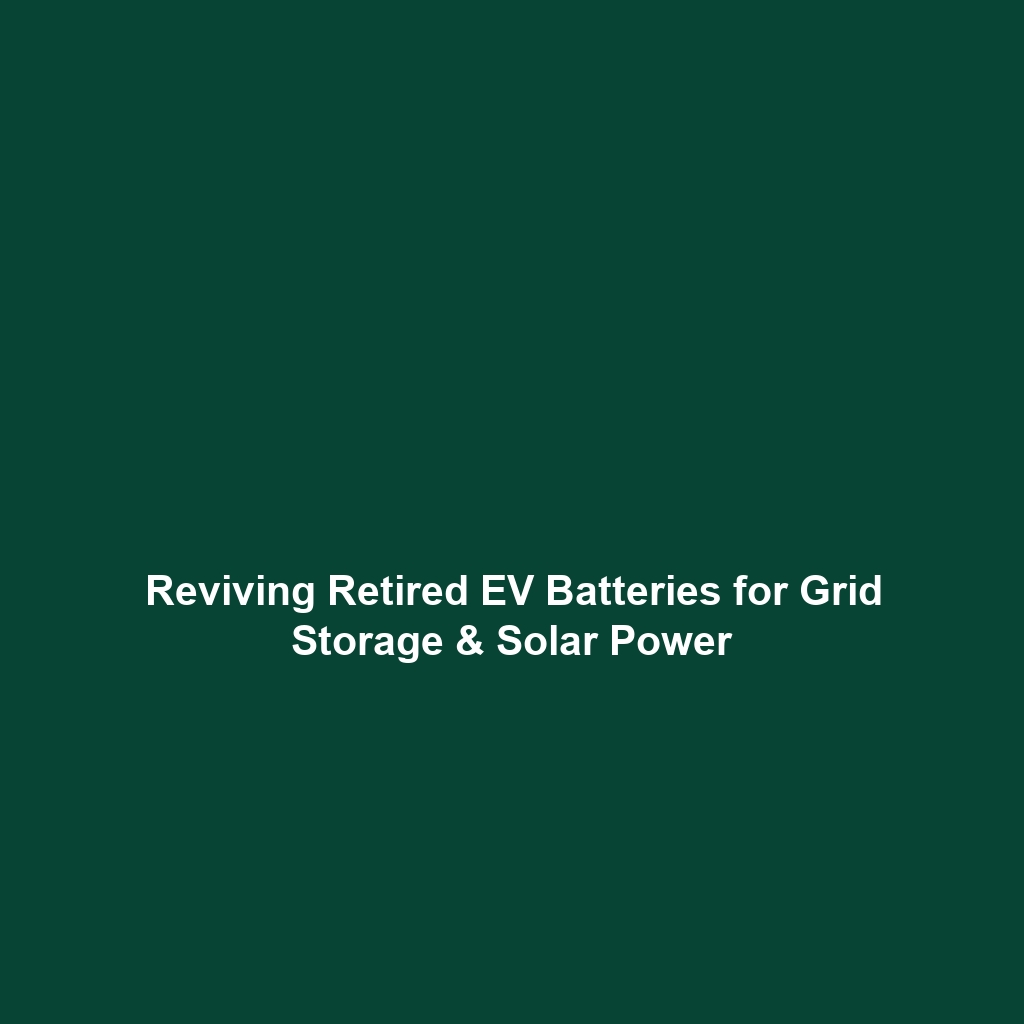Using Retired EV Batteries for Grid Storage and Solar Energy Integration
Introduction
As the world pivots toward renewable energy solutions, the repurposing of retired electric vehicle (EV) batteries for grid storage and solar energy integration presents a promising avenue for enhancing battery technology. This innovative application not only extends the lifespan of these batteries but also significantly contributes to energy stability and efficiency in power distribution. In this article, we explore how retired EV batteries can complement energy systems, thereby playing a crucial role in managing renewable energy sources.
Key Concepts
Understanding Battery Retrofitting
Retired EV batteries, after reaching their lifecycle limits for vehicle use, still possess considerable energy storage capabilities. This section outlines the main concepts:
- Battery Degradation: Understanding how and when batteries lose their capacity is essential for effective repurposing.
- Energy Storage Systems (ESS): These systems utilize retired batteries to store excess solar power generated during the day for use at night or during peak demand.
- Grid Stability: Integrating retired batteries helps enhance grid reliability and manage supply and demand effectively.
Applications and Real-World Uses
Exploring the applications of retired EV batteries in battery technology highlights their potential:
- Residential Energy Storage: Homeowners can use repurposed batteries to store solar energy, reducing dependence on the grid and lowering electricity costs.
- Commercial Applications: Businesses are increasingly adopting battery energy storage to mitigate energy costs and ensure a steady power supply during outages.
- Grid Support: Utilities are using retired EV batteries in large-scale energy storage projects to stabilize the grid and provide peak shaving.
Current Challenges
Despite the benefits, there are several challenges of using retired EV batteries for grid storage and solar energy integration:
- Cost-Effectiveness: The initial investment in infrastructure for battery storage can be high.
- Battery Variability: Differences in battery types and conditions can affect performance predictability.
- Regulatory Hurdles: Compliance with energy regulations can complicate integration into existing systems.
Future Research and Innovations
Future research in this field is promising, focusing on:
- Advanced Recycling Techniques: Innovations aimed at recycling retired batteries more efficiently could reduce waste and improve sustainability.
- Enhanced Battery Management Systems: Developing smarter management systems for integrated energy solutions.
- Next-Gen Batteries: Research into new materials that may provide longer lifespans and better reliability than current EV batteries.
Conclusion
In summary, the use of retired EV batteries for grid storage and solar energy integration is a transformative concept within battery technology that showcases sustainability and efficiency. As we continue to innovate, it is essential to address the challenges presented and develop forward-thinking solutions. For further reading, explore our articles on battery recycling technologies and renewable energy integration strategies.
